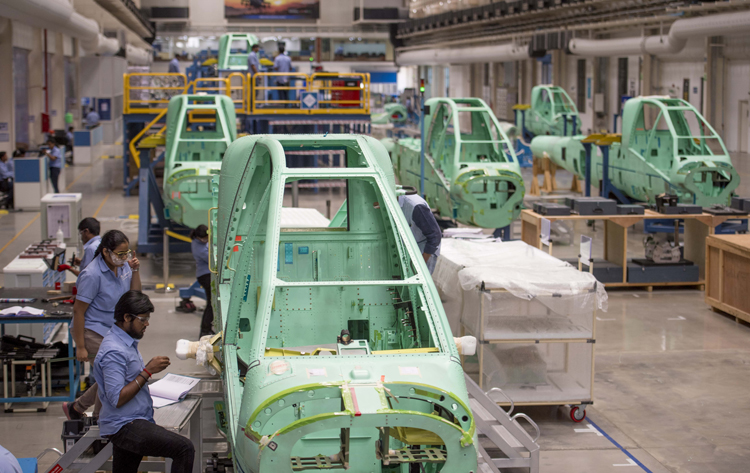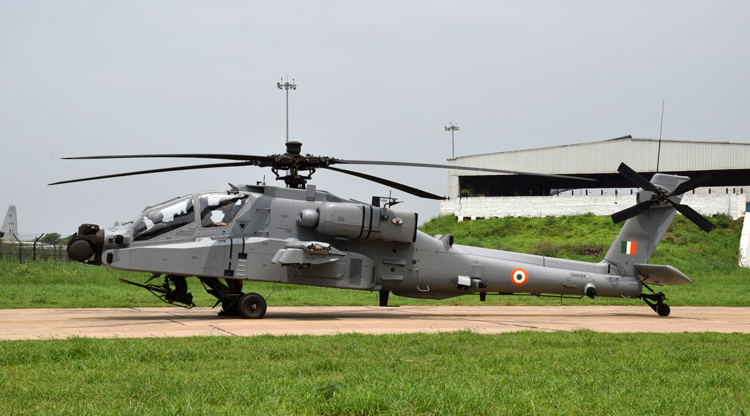INDIAN ARMED FORCES CHIEFS ON OUR RELENTLESS AND FOCUSED PUBLISHING EFFORTS

The insightful articles, inspiring narrations and analytical perspectives presented by the Editorial Team, establish an alluring connect with the reader. My compliments and best wishes to SP Guide Publications.

"Over the past 60 years, the growth of SP Guide Publications has mirrored the rising stature of Indian Navy. Its well-researched and informative magazines on Defence and Aerospace sector have served to shape an educated opinion of our military personnel, policy makers and the public alike. I wish SP's Publication team continued success, fair winds and following seas in all future endeavour!"

Since, its inception in 1964, SP Guide Publications has consistently demonstrated commitment to high-quality journalism in the aerospace and defence sectors, earning a well-deserved reputation as Asia's largest media house in this domain. I wish SP Guide Publications continued success in its pursuit of excellence.
Indian Fuselage for Apache Helicopters
The production of the 100th fuselage for Apache helicopters has been accomplished by TABL within three years of the facility being established at Hyderabad
 |
The Author is Former Director General of Information Systems and A Special Forces Veteran, Indian Army |

On July 23, Tata Boeing Aerospace Limited (TBAL) announced the delivery of the 100th fuselage for the AH-64 Apache combat helicopter to Boeing from its Hyderabad-based state-of-the-art manufacturing facility. The fuselage is being sent by TABL from Hyderabad to the Boeing Company’s AH-64 Apache manufacturing facility in Mesa, Arizona, where it will be integrated into the final assembly line.
TABL is the Boeing’s first equity joint venture in India and it is a result of a 2015 partnership agreement with Tata Advanced Systems Limited (TASL). The Hyderabad facility of TABL is spread over 14,000 square meters, and has been producing aero-structures for Boeing’s AH-64 Apache helicopter. Besides the fuselage, these include secondary structures and vertical spar boxes which are meant for the global customers. Recently, Boeing had announced the addition of a new production line which will be manufacturing the complex vertical fin structures meant for the 737 family of airplanes.
Recently, Boeing had announced the addition of a new production line which will be manufacturing the complex vertical fin structures meant for the 737 family of airplanes
The production of the 100th fuselage for Apache helicopters has been accomplished by TABL within three years of the facility being established at Hyderabad. Sukaran Singh, MD and CEO of TASL said, “The achievement of 100th fuselage delivery for AH-64 reflects our strong ability to industrialise and build up complex aerospace programmes and deliver with highest levels of quality.” This has placed India in the global supply chain for the AH-64 Apache Helicopters.
Salil Gupte, President Boeing Indiastated, “In the past two years, our sourcing from India has quadrupled to more than $1 billion. Skilled talent, robust infrastructure, ease of doing business, and a highly responsive government administration make Telangana state a perfect destination for the high-end manufacturing work that the aerospace and defence industry demands. Tata Boeing Aerospace Limited is an example of Boeing’s commitment towards Atmanirbhar Bharat. The co-development of integrated systems in aerospace and defence is not only for India, but for the whole world.”
Over 1,200 Boeing-made Apache helicopters are currently operational worldwide. The US Army is the primary operator of the AH-64. Apache has also become the primary attack helicopter of multiple nations, including Japan, Israel, Greece, Netherlands, Singapore, and the United Arab Emirates. India, Kuwait, Indonesia, Taiwan. South Korea and Qatar are also operating the AH-64 Apache helicopters while Australia, Bangladesh, Morocco and Philippines are negotiating their import from the US. The AH-64 has also been built under license in the United Kingdom as the AgustaWestland Apache.
The Indian aerospace and defence market is projected to reach $70 billion by 2030, driven by the burgeoning demand for advanced infrastructure and government thrust
Boeing Apache helicopters are already in service with the Indian Air Force (IAF). In December 2010, India requested the import of 22 Apache helicopters and associated equipment for air combat missions. On May 11, 2019, India received its first AH-64E in a ceremony at Boeing's Mesa, Arizona facility. With effect from September 3, 2019, eight AH-64E Apache helicopters were inducted into the IAF. Subsequently, India requested six more AH-64E Apache helicopter and associated equipment in an estimated $930 million contract. This deal has been approved by the US and deliveries of the Apaches for the Indian Army are planned to begin in 2023.
The Indian aerospace and defence market is projected to reach $70 billion by 2030, driven by the burgeoning demand for advanced infrastructure and government thrust. As India is rapidly modernising its military sector, the aerospace and defence industry is expected to consume electronics worth $70-72 billion over the next decade in agreement with two industry associations; National Association of Software & Services Companies (NASSCOM) and the India Electronics and Semiconductor Association (IESA).

In the recent edition of FDI's Aerospace Cities of the Future 2020-21 rankings, Hyderabad was ranked number one by FDI Intellegence.com, a division of the Financial Times Group, under the category 'Top 10 Aerospace Cities in Cost Effectiveness.' The other Indian cities that also made it to the top 10 list include New Delhi and Bengaluru. Interestingly in October 2020, Starburst Aerospace announced plans to expand presence in India and develop an innovation centre in Mumbai and conduct engagement activities in Delhi, Bangalore and Hyderabad through partners in the aerospace and defence community.
Hyderabad was ranked number one by FDI Intellegence.com, a division of the Financial Times Group, under the category 'Top 10 Aerospace Cities in Cost Effectiveness.'
Defence and aerospace will continue to be prominent under the ‘Make in India’ initiative. Government’s policies have centered on the implementation of advanced technologies in the defence sector, improving the potential of domestic manufacturing. The Ministry of Defence (MoD) has set a target of 70 per cent self-reliance in weaponry by 2027, creating huge prospects for players in the industry. Government also plans to support start-ups and promote active participation in the industry.
The MoD estimates that the number of micro, small and medium enterprises (MSMEs) in India will double to 16,000 by 2026 as they are integrated into global supply chains. Interestingly in September 2020, the Bengaluru-based aerospace company Dynamatic Technologies Limited announced a contract for constructing parts for the T-7A Red Hawk advanced jet trainer produced by Boeing in partnership with Saab. In September 2018, the US Air Force had selected the T-7A Red Hawk to replace the Northrop T-38 Talon jet trainers.
Government’s policies have centered on the implementation of advanced technologies in the defence sector, improving the potential of domestic manufacturing
To meet the needs of Tier 1 suppliers and build an aerospace industry ecosystem in the country, manufacturers worldwide are partnering with Indian suppliers and small and medium enterprises. Active participation of global players is expected to further boost growth of the aerospace industry in India. India has a great opportunity to not only become part of the global supply chain in the aerospace but also total global defence industry.
Scope for the above will go up manifold when the two planned Defence Industrial Corridors (DICs) get established and become operational in India. The MoD informed Rajya Sabha on July 27 that land has already been acquired for the two DICs in Uttar Pradesh and Tamil Nadu. With improving ease of business, increased availability of skilled personnel and cheap labour, India has the potential of becoming global industrial hub in the defence sector.





